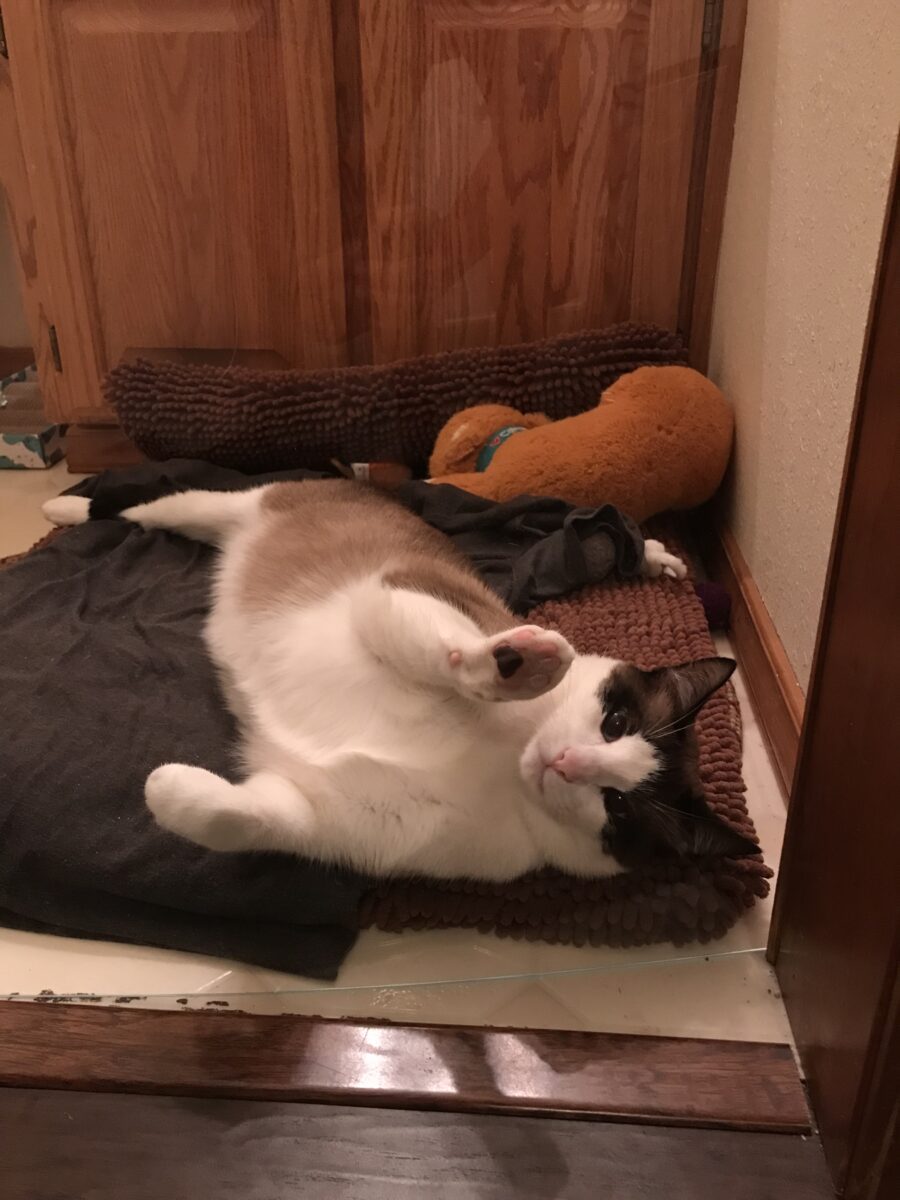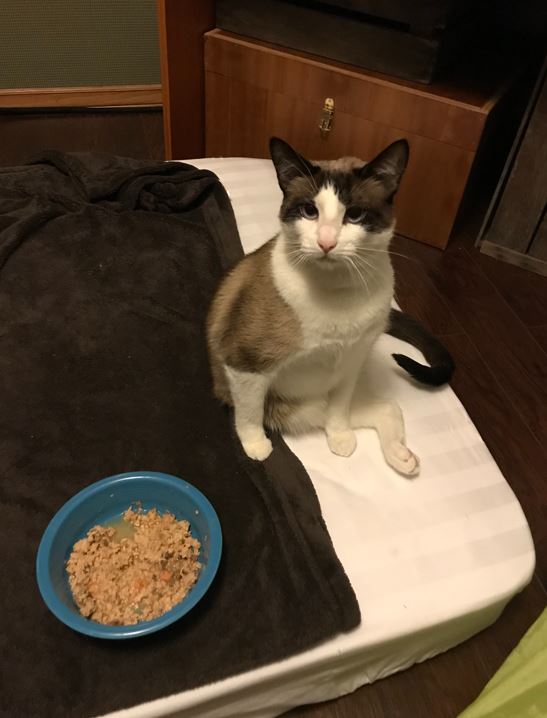I did my best to transform a large dog crate into a comfortable space for Skippy, but his response was to climb the door and the sides, which would result in him falling down and landing hard on his broken hip. After half an hour, I gave up on the crate idea and moved him to a small spare bathroom. I was able to find a low sided litter box at Petco (sold as a dog litter box), and added a comfy bed, food and water, and some low-impact toys to keep him from getting too bored. We picked up a piece of plexiglass from the local hardware store, and made a “baby gate” out of it, so that Skippy was contained, but could still see and hear us. This definitely helped reduce his feelings of isolation and depression. I reached out to Skippy’s previous medical caregiver for advice, and she let me know that YouTube has a vast array of bird videos available to keep cats engaged! I set up our iPad in the bathroom with him, and would keep the bird videos playing all day.

In the meantime, while Skippy was on bedrest, I was combing the internet for information about FHO surgery, and remaining leg surgery on tripawds. I wasn’t finding a lot of examples of tripawd FHO surgery, and so I began contacting every orthopedic veterinary clinic on the West Coast, from British Columbia to California. I emailed medical records, sent off copies of x-rays, made pleading phone calls, and tried to find any board certified orthopedic veterinarian to see him and consult on his case. I was frustrated to learn that they were all booked out for months, and some of them didn’t have openings until next year. They were all kind enough to review the records, however, and all agreed that FHO was the only way to go other than euthanasia. Unbeknownst to me, this was a very common surgery among four-legged cats. And euthanasia wasn’t something we were even willing to consider.
And so after nearly a month of bed rest, it was obvious that Skippy wasn’t getting better, and that surgery was going to be our only option. Out of the blue, we received notification from a local ortho specialist that he had an opening, and could work Skippy into his schedule immediately. And although we were still terrified at the idea of surgery, we were anxious to put an end to Skippy’s pain, and wanted to get him on the road to recovery. We gave him an early supper, and then made sure he was fasting overnight for surgery in the morning.

Next up is the overview of Skippy’s surgery and recovery process. In hindsight, I wish I hadn’t spent those 30 days trying to conservatively heal his fracture, but at the time I did the best I could with the information that I had. If I had to do it over again, I would opt for immediate FHO surgery.